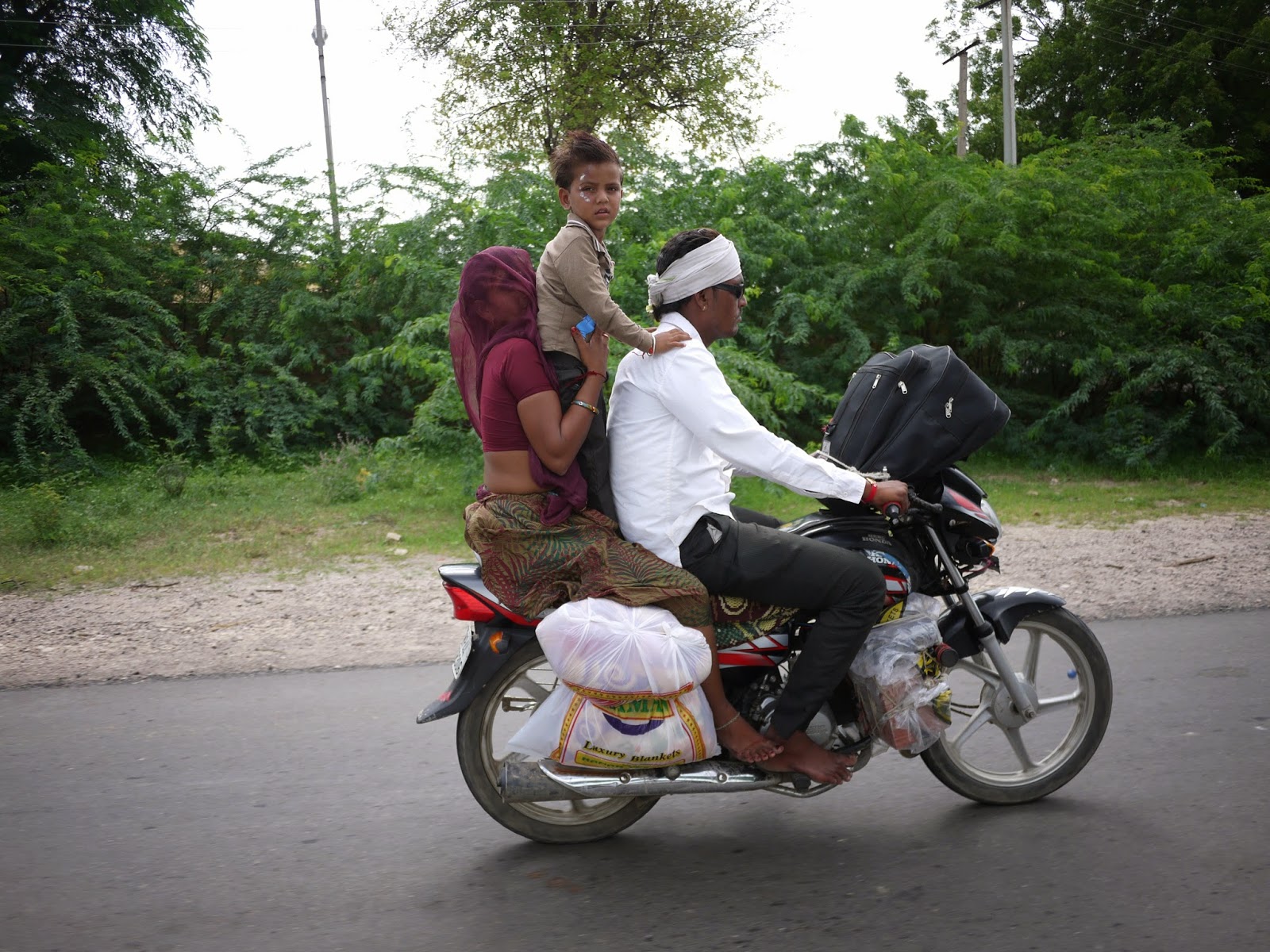Howdy Pilgrim
 |
| They were travelling by tractor.... |
Well the Duke actually didn't say "Howdy Pilgrim" it was actually "Hey Pilgrim, your gonna need a couple of stitches". Although John Wayne wasn't in Rajasthan, the scenery was from a John Ford film. Sweeping expanses of arid country with low trees and punctuated with sand dunes and pilgrims everywhere.
We had wanted to visit Jaisalmer for a long time and a weekend that coincided with Dahi Handi and Indian Independence day gave us the 4 day window to allow us to do justice to the City. From Mumbai, you fly to Jodhpur for a four and a half hour drive to Jaisalmer. I wanted to go via the temples at Osian but our driver warned us against it as the it was a secondary road and he said lots of people were walking along the road. I took his advice and so we travelled the main road to Jaisalmer via Pokhran, site of India's first nuclear tests and a hot spot for cancer, although I was not really sure why.
 |
| .....and tricycle. |
The reason soon unfolded. During the Monsoon months of August and
September there is a Festival in the village of Ramdevra. The village is named after Baba Ramdevji a Tanwar Rajput and a saint who took Samādhi, the conscious enlightened exit from the mortal body, in 1384 AD, at the age of 33
years. He is a folk deity and was a local ruler in Rajasthan renowned for his efforts to improve the lives of the downtrodden and poor. His is considered to be an incarnation of Vishnu. In 1931, Maharaja
Ganga Singh of Bikaner constructed
a temple around the site of the samadhi.
Near the village, there is a tank known as Ramsagar Talab, a tank which supplies water to the town and also serves a religious function, which is believed to have been constructed by Baba Ramdevji himself. There is also a large step well, the Parcha Bavori situated nearby.
 |
| They traveled with bands.... |
The festival is attended by over five hundred thousand devotees who come from Rajasthan but also from throughout India. A significant part of the pilgrimage is the walk from Jodhpur to Ramdevra via one of the two roads. The 188 km walk takes about 7 days with the pilgrims starting at about 15km a day and increase the kilometres each day over the week. Some have no possessions with them and walk in chappels (flp flops for most and thongs for Australians). Most carry a small bag, much smaller than carryon luggage size. One in each party carried a wooden pole with brightly coloured pennants which are to be left at the shrine at Ramdevra.
 |
| ....and boys. |
While thousands are on foot, many were on motorbikes.
Motorbikes carried families of four
with a small child sleeping on their mothers lap while riding
pillion. Others are on
bicycles and we even saw some disabled people using their three wheeled hand
cranked tricycle which are common in India.
Along the route are water points, huge communal tents and first aid tents to support the pilgrims. These sites even put in place dirt speed humps that are so high the under frame of our Innova dragged when trying to cross. In general the road has a wide verge and, apart from tollways was the best road we had travelled on in India. However, the combination of walkers, tricycles, bicycles and motorcycles meant that we were constantly slowing. Our driver, who had completed the pilgrimage five times and whose 70 plus year old mother does it every year, told us that only one person in every 100,000 dies on the pilgrimage. "Acha", he exclaimed, "all good"!
 |
| They rested at night in large tents.... |
The Festival is open to all regardless of caste, creed or religious affiliations, and spend their time at the Shrine singing bhajans and kirtans in homage to the Baba. The Pilgrims also visit the shrine itself and the queue can stretch for kilometres.
 |
| and after Pokhran there were no more Pilgrims on the road. |



